| Author |
Message |
Maurizio D'Angelo

|
 Posted: Mon 05 Oct, 2009 8:26 pm Post subject: stange hilt Posted: Mon 05 Oct, 2009 8:26 pm Post subject: stange hilt |
 |
|
Hello everyone,
a couple of days, I often look strange hilt. From a careful viewing, I found some things that I find strange.
If anyone has confirmations or suggestions would be appreciated.
1) There are 4 holes, appears to be a grip wooden sewing.
2) transverse ropes, holding together the grip of wood.
3) two ropes out of the knobs are the same as the 4 holes?
4) Does anyone know if there hilt bound with this technique? is a technique alien to Western swords?
5) The pommel, pommel onion is called, the only one I have found that talking is Hoffmeier. Anyone know if Oakeshott, Laking. Petersen, Geibig, Wheeler, etc. were never told about this type of pommel?
6) The pommel is secured with a nut of bronze or peneed?
Too many questions? is perhaps a little too much. I apologize in advance.
here the stange hilt:
 Attachment: 184.17 KB Attachment: 184.17 KB
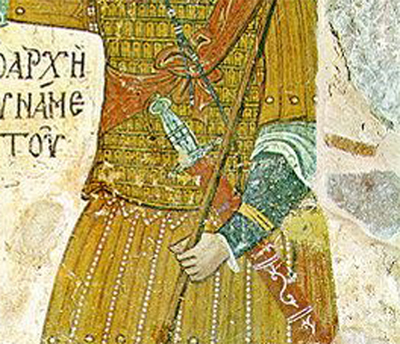
|
|
   |
 |
Jean Thibodeau

|
 Posted: Mon 05 Oct, 2009 8:59 pm Post subject: Posted: Mon 05 Oct, 2009 8:59 pm Post subject: |
 |
|
Hard to tell with artwork as the lines could represent many different things ?
Lines could be cord bindings or metal bands or surface decoration on some sort of textile/leather/other grip coverings ?
Inlays of ivory ? Holes might be precious stones/pins/rivets, functional in keeping the grip together or just decorative ?
Now in period the representation would probably not be ambiguous as people would fill in the blanks with their every day knowledge of what the lines mean.
Now if there is a surviving period sword with a similar grip still in good condition i.e. a similar type of sword we could refer to, it would be much easier to pin down what the " lines " mean.
Another ambiguity is that a circle inside a pommel could mean a ridge line or a way to show a ring pommel i.e. in one case the inner circle is a surface and in the other it's a hole ???
If many similar depictions are available for comparison it becomes easier to guess at what the graphic tricks used by the artists are supposed to mean or what are the conventions used to represent a hole versus a surface.
Well, maybe not too helpful giving you an answer to in this specific case but just making a point about the risks of making assumptions about what is being represented in artwork.
You can easily give up your freedom. You have to fight hard to get it back!
|
|
  |
 |
Romulus Stoica

Location: Hunedoara, Transylvania, Romania Joined: 26 Oct 2006
Posts: 124
|
 Posted: Tue 06 Oct, 2009 12:49 am Post subject: Posted: Tue 06 Oct, 2009 12:49 am Post subject: |
 |
|
|
The picture looks like a byzantine church fresco. The armor is lamellar and looks very similar with what a military saint will wear in a byzantine or eastern european orthodox curch painting. I saw church paintings in Romania showing grips riveted to the tang.
|
|
   |
 |
|
Eric W. Norenberg
|
 Posted: Tue 06 Oct, 2009 9:16 am Post subject: Posted: Tue 06 Oct, 2009 9:16 am Post subject: |
 |
|
| Romulus Stoica wrote: | | The picture looks like a byzantine church fresco. The armor is lamellar and looks very similar with what a military saint will wear in a byzantine or eastern european orthodox curch painting. I saw church paintings in Romania showing grips riveted to the tang. |
I'm not that well versed in the eastern/byzantine school, but I'd second Romulus' statement. Where is that fresco located? It reminds me very much of the eastern- influenced mosaics I've seen in Ravenna, Torcello, etc. Not sure if it will help with re-constructing a hilt like that in reality, but knowing where the artwork is located, when and by (and for?) whom is was executed, might be a start.
-Eric
|
|
  |
 |
Maurizio D'Angelo

|
 Posted: Tue 06 Oct, 2009 10:33 am Post subject: Posted: Tue 06 Oct, 2009 10:33 am Post subject: |
 |
|
| Eric W. Norenberg wrote: | | Romulus Stoica wrote: | | The picture looks like a byzantine church fresco. The armor is lamellar and looks very similar with what a military saint will wear in a byzantine or eastern european orthodox curch painting. I saw church paintings in Romania showing grips riveted to the tang. |
I'm not that well versed in the eastern/byzantine school, but I'd second Romulus' statement. Where is that fresco located? It reminds me very much of the eastern- influenced mosaics I've seen in Ravenna, Torcello, etc. Not sure if it will help with re-constructing a hilt like that in reality, but knowing where the artwork is located, when and by (and for?) whom is was executed, might be a start.
-Eric |
12th century fresco of Joshua from the monastery of Hosios Loukas (Greece). It accurately depicts the typical equipment of a heavily armed Byzantine infantryman of the 10th-12th centuries. He wears a lamellar "klivanion", splinted rerebraces and "pteruges" and is armed with a "kontarion" and a "spathion".
|
|
   |
 |
Maurizio D'Angelo

|
 Posted: Tue 06 Oct, 2009 11:15 am Post subject: Posted: Tue 06 Oct, 2009 11:15 am Post subject: |
 |
|
| Jean Thibodeau wrote: |
Well, maybe not too helpful giving you an answer to in this specific case but just making a point about the risks of making assumptions about what is being represented in artwork. |
I completely agree Jean. My guess, was born the following observations.
strings with end nodes were used by the Byzantines, on swords, and harness horses.
The color red was a symbol of power. These small ropes with the knots in the end, are confirmed iconography.
For the system of fastening the grip, it is my hypothesis, of course, but after many studies, here is an example of experimental archeology  . Joke of course. Joking aside, the system used, it works, if you pull the two ropes, the two pieces of wood are fixed hard. . Joke of course. Joking aside, the system used, it works, if you pull the two ropes, the two pieces of wood are fixed hard.
I do not want influnzare your reflections, can be anything, to me this seems likely.
In my reflections, I always think that the Byzantines were the "grandchildren" of the Romans, then gladius and Spatha, they not are completely unrelated. Another question: the Roman gladius had a brass nut fixed the pommel? There was the thread?
Here the experimental archeology:    
 Attachment: 122.67 KB Attachment: 122.67 KB
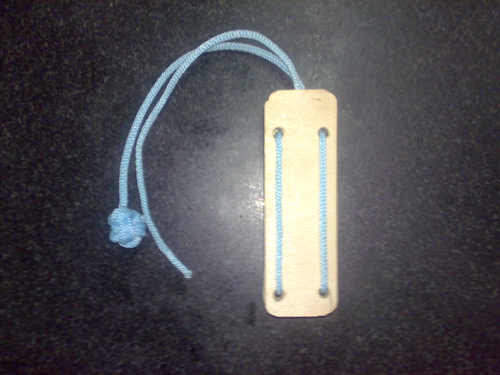
 Attachment: 148.23 KB Attachment: 148.23 KB
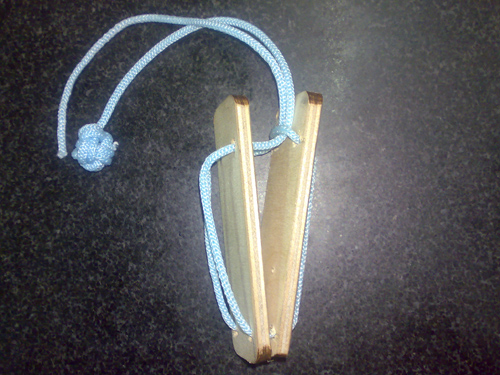
|
|
   |
 |
Chad Arnow
myArmoury Team


|
 Posted: Tue 06 Oct, 2009 11:59 am Post subject: Posted: Tue 06 Oct, 2009 11:59 am Post subject: |
 |
|
Do you have any picture that is more of a closeup of that hilt and is also larger in size? That might help.

ChadA
http://chadarnow.com/
|
|
    |
 |
Maurizio D'Angelo

|
 Posted: Wed 07 Oct, 2009 2:34 am Post subject: Posted: Wed 07 Oct, 2009 2:34 am Post subject: |
 |
|
| Chad Arnow wrote: | | Do you have any picture that is more of a closeup of that hilt and is also larger in size? That might help. |
Sorry,
but I haven't more photos. I tried to enlarge, but you better have already entered.
Ciao
Maurizio
|
|
   |
 |
|
Matthew Amt
|
 Posted: Wed 07 Oct, 2009 7:19 am Post subject: Posted: Wed 07 Oct, 2009 7:19 am Post subject: |
 |
|
| Maurizio D'Angelo wrote: | ...For the system of fastening the grip, it is my hypothesis, of course, but after many studies, here is an example of experimental archeology  . Joke of course. Joking aside, the system used, it works, if you pull the two ropes, the two pieces of wood are fixed hard. . Joke of course. Joking aside, the system used, it works, if you pull the two ropes, the two pieces of wood are fixed hard. |
Well, up through the 4th century at least, Roman sword grips were one piece, frequently bone but also wood or ivory. So unless there is archeological evidence for grips made of 2 slabs secured with cords, my conclusion is that we are looking at a one-piece grip that has been decorated in some way. Usually that was carving, but I guess there could be inlay and even cords added.
Now, around the 3rd or 4th century (don't remember exactly because that's out of my usual era!), ring-pommel swords were popular. The ring pommel was formed by bending the tang around in a circle. As I understand it, the grip on such a sword would have to be 2 slabs wrapped with cord or leather, but it would be a complete covering like on a medieval sword. But to me, the sword in this fresco does NOT look like a ring pommel type, it just looks like regular solid bone or ivory (or silvered).
| Quote: | | Another question: the Roman gladius had a brass nut fixed the pommel? There was the thread? |
There was often a brass or iron washer or finial on top of a gladius pommel, but the tang went through it and was peened like most other swords. The tang was not threaded.
Vale,
Matthew
|
|
   |
 |
Chad Arnow
myArmoury Team


|
 Posted: Wed 07 Oct, 2009 7:41 am Post subject: Posted: Wed 07 Oct, 2009 7:41 am Post subject: |
 |
|
I think it's just decoration/over-binding of a regular grip. The pommel just looks like a squished wheel to me, and looks as if the proportions weren't drawn correctly.
Here are two other decorated grips. Not the same style, but I think they're the same concept.
 Attachment: 108.44 KB Attachment: 108.44 KB
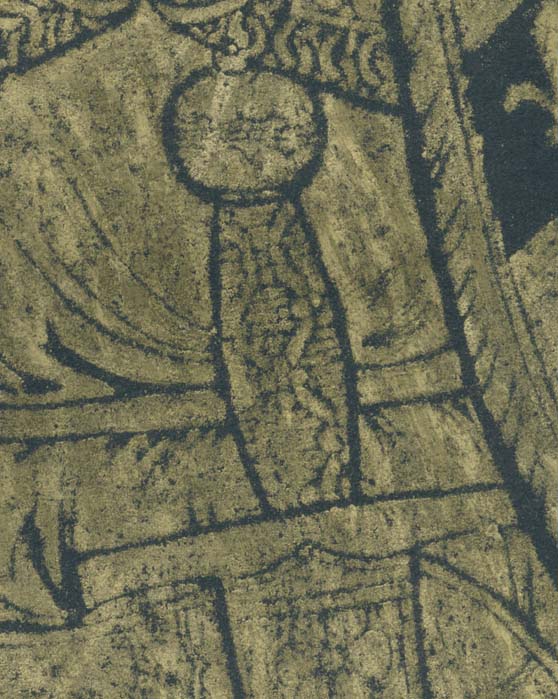
Grip on Fitzralph brass
 Attachment: 37.86 KB Attachment: 37.86 KB
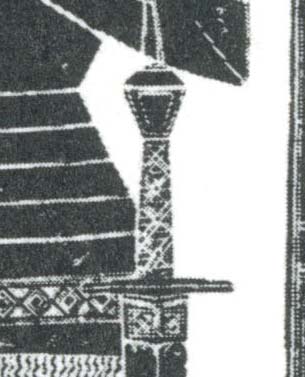
Grip from another English brass.

ChadA
http://chadarnow.com/
|
|
    |
 |
|
Michael Eging
|
 Posted: Wed 07 Oct, 2009 7:47 am Post subject: Posted: Wed 07 Oct, 2009 7:47 am Post subject: |
 |
|
Thanks for the close ups, Chad. That helps to really get at the patterns on the grips.
Also, here is a thread on Byzantine sword from a while back that shows some variations of styles. As you might tell in the thread, I really enjoy focus on things Byzantine and this has been an area of interest, and also an area where I would like to be pointed to additional resources if people have them.

http://www.myArmoury.com/talk/viewtopic.php?t=8927&highlight=
M. Eging
Hamilton, VA
www.silverhornechoes.com
Member of the HEMA Alliance
http://hemaalliance.com/
|
|
  |
 |
Maurizio D'Angelo

|
 Posted: Thu 08 Oct, 2009 7:09 am Post subject: Posted: Thu 08 Oct, 2009 7:09 am Post subject: |
 |
|
hello guns,
thank you all I appreciate your suggestions. 
Chad, your photos are not on the Internet. Thank you. 
Ciao
Maurizio
|
|
   |
 |
|
|
You cannot post new topics in this forum
You cannot reply to topics in this forum
You cannot edit your posts in this forum
You cannot delete your posts in this forum
You cannot vote in polls in this forum
You cannot attach files in this forum
You can download files in this forum
|
All contents © Copyright 2003-2025 myArmoury.com — All rights reserved
Discussion forums powered by phpBB © The phpBB Group
Switch to the Basic Low-bandwidth Version of the forum
|

